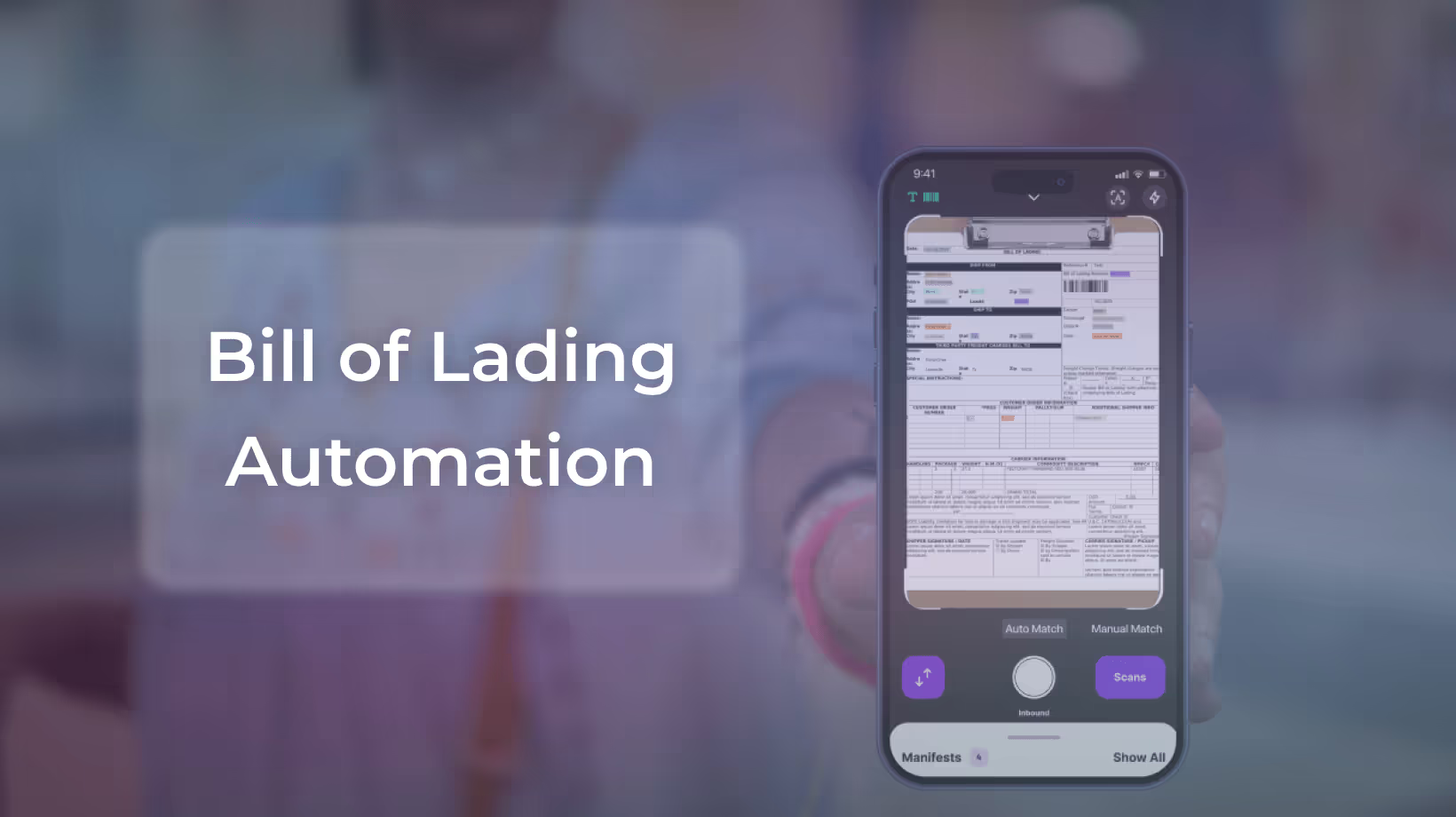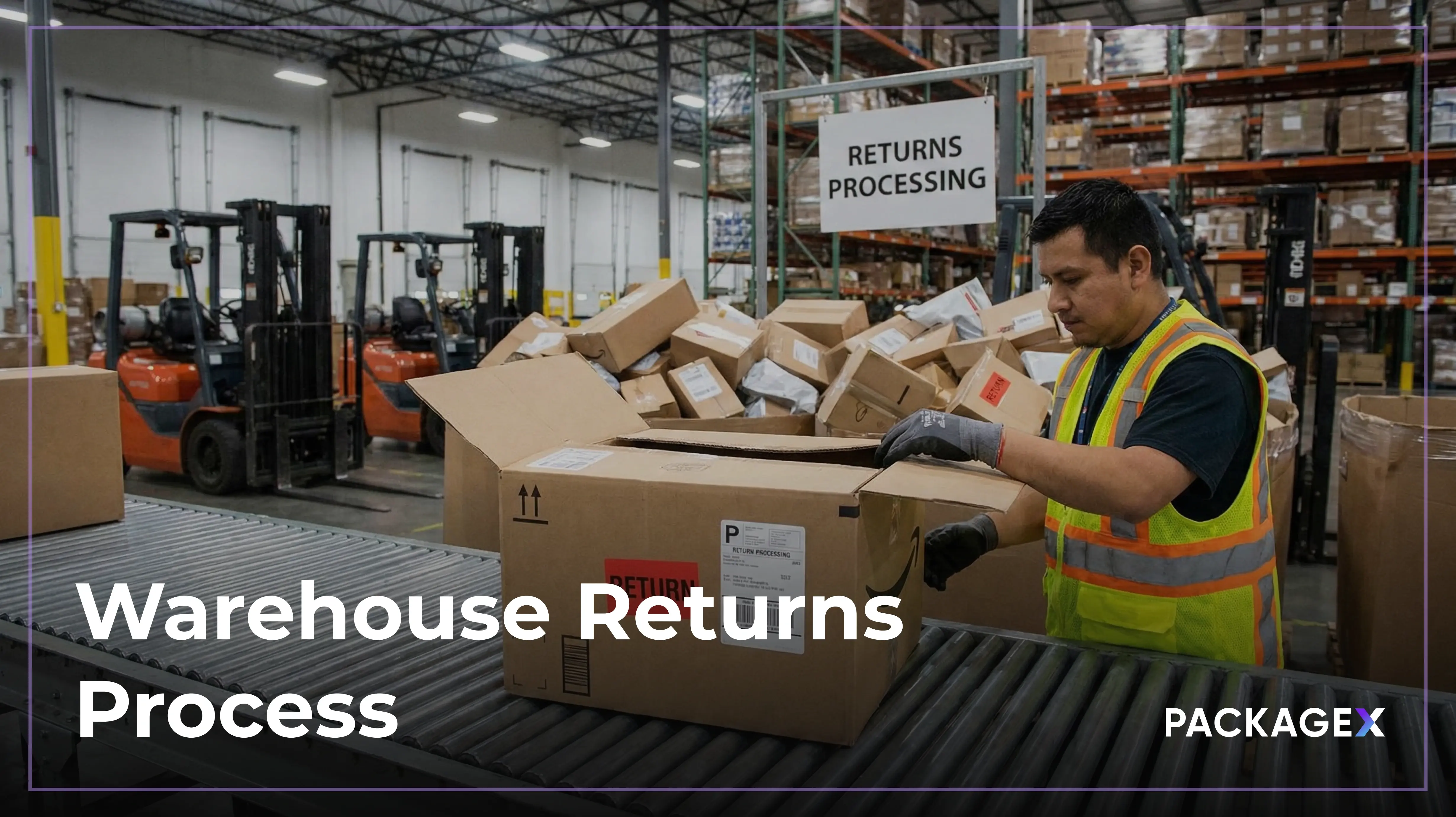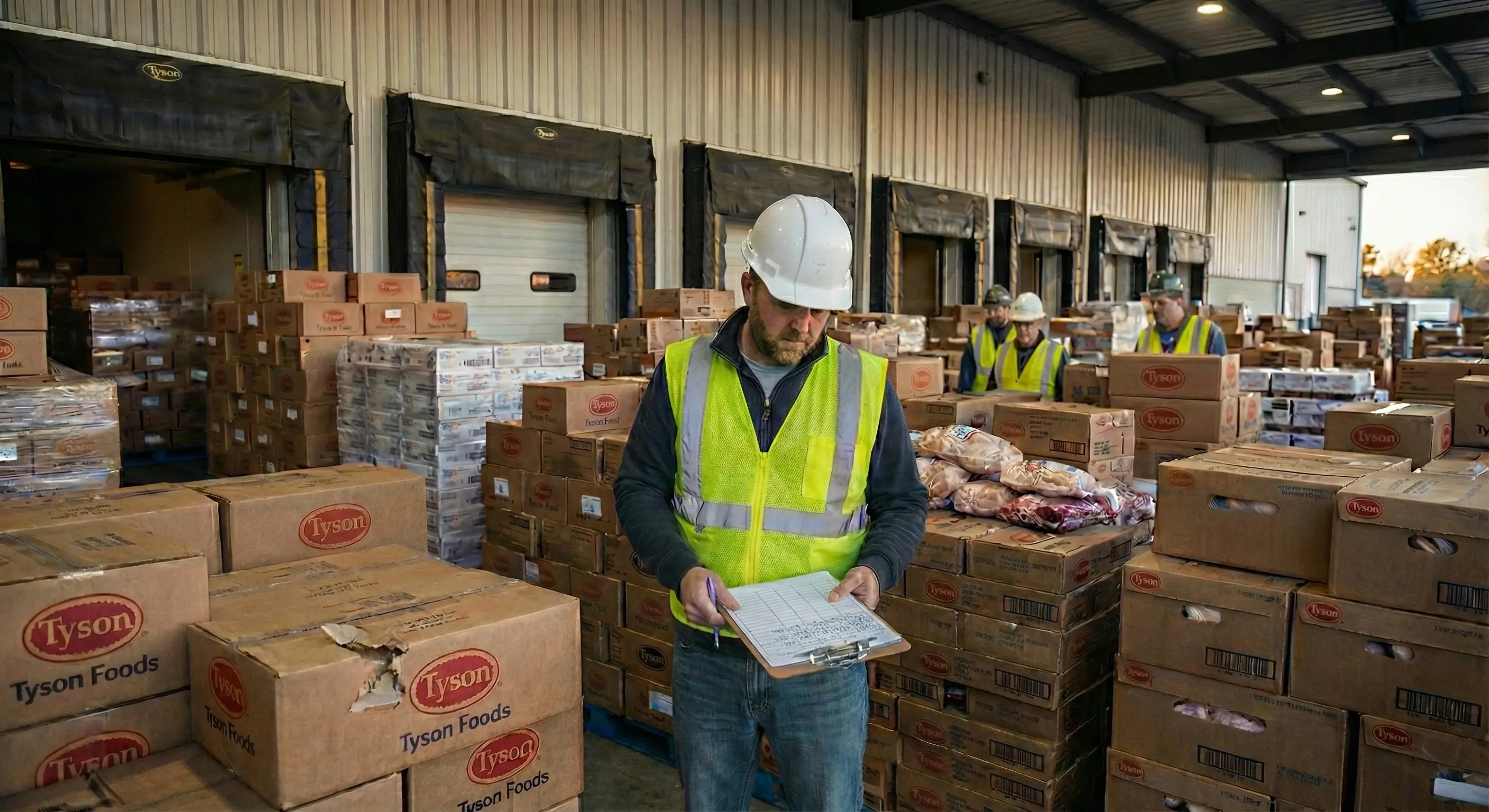A bill of lading (BOL) is a legal document between a transportation company and a shipper. It outlines the main details about the shipment, including the type, quantity, and destination of the goods. A bill of lading is like a paper trail that keeps everything in check between the shipper and the carrier. It's more than just a receipt; it also shows who owns the cargo. This really helps track and trace things as they move around.
BOL automation furthers this process by utilizing technology to create and manage these essential shipping documents. This automation reduces the need for manual input, reducing errors, delays, and labor costs while also maintaining better compliance and security throughout the shipping process. Instead of handling all that paperwork manually, you can take care of it automatically. So you will have a personal assistant handling all your bills of lading for shipping documents. Pretty much a win all around.
What is a Bill of Lading (BOL)?
A Bill of Lading (BOL) is a document in the shipping industry that serves several important functions.
- First and foremost, it details the specifics of a shipment, such as the type, quantity, and destination of goods, along with any special instructions for handling or delivery.
- Legally, a signed BOL functions as a binding contract between the shipper and the carrier, ensuring that both parties agree on the terms of the shipment.
- It also serves as proof of ownership of the goods being transported. In fact, the BOL can act as a document of title, meaning it can be transferred to another party, signaling the transfer of ownership.
- In international trade, the BOL is essential for customs clearance, as it provides the necessary documentation to ensure that shipments comply with international regulations and requirements.
- A Bill of Lading (BOL) is usually issued by a freight forwarder at a port or depot. The original copy of the BOL is used to prevent theft, which could lead to legal disputes in international trade.
If the BOL gets stolen or tampered with, it can cause major issues in confirming ownership and the shipment’s details, possibly even resulting in litigation between the parties involved. So, having a secure original copy ensures everything stays above board.
Bill of Lading Example to Understand Better
Here's a rundown of the common bill of lading requirements:
- Shipper's Information: The name and address of the sender (the "ship from" details).
- Receiver's Information: The name and address of the intended recipient (the "ship to" details).
- Billing Details: The name and address of the entity responsible for payment (the "Bill-to" information).
- Pickup Date: The scheduled date for the freight's pickup.
- Reference Numbers: Any purchase orders or specific reference numbers tied to the shipment.
- Special Instructions: Notes about handling or any unique requirements for the shipment.
- Item Description: Details about the items being transported, including their nature and quantity.
- Package Type: The type of packaging used for the goods (e.g., pallets, crates, boxes).
- NMFC Code: The National Motor Freight Classification code for the items being shipped.
- Freight Class: The class designation is based on the freight's weight, density, and other factors.
- Hazardous Shipment Information: A statement indicating whether the items are classified as hazardous materials.
To create BOL, fill out all necessary details, then sign and date the document to finalize it. This signature confirms its validity and serves as the official authorization for the shipment.
A Bill of Lading (BOL) should be signed by the shipper at the time of loading, the carrier (driver) upon pickup, and the receiver (consignee) when the goods are delivered. When the driver signs a bill of lading (BOL) at pickup, it signifies that they’ve reviewed the document, understood its terms, and agreed to the outlined details of the shipment. This process ensures that each party acknowledges their responsibility and the condition of the shipment at each stage.
Why BOL Automation?
The BOL automation solution uses a powerful combination of Intelligent Automation tools and Generative AI to streamline traditionally complex workflows. Enabling straight-through processing at critical process points creates efficiency and standardization across the board. Some benefits of BOL automation include:
Time-Saving
With a fully automated solution, you can save hours of work every day. This means you’ll have the capacity to handle new orders immediately without waiting for someone to manually enter BoL details into your system.
Cost-Effective
Automation helps lower costs in two key ways: by reducing paper waste and eliminating the need for physical storage space. It also reduces errors that might otherwise result in expensive legal issues, fines, or dissatisfied clients.
More Accuracy
With automated data extraction, there’s far less room for human error during data entry, ensuring that the information captured is significantly more accurate and reliable.
Improved Compliance
Automated systems can be built to consistently comply with regulatory requirements and meet industry standards, providing greater reliability for logistics functions.
Security Enhancement
With an electronic bill of lading system, for instance, only the shipper and carrier have access by default unless otherwise specified. This ensures that sensitive information stays secure and is only shared with the appropriate parties.
How to do Bill of Lading Automation
Here's a step-by-step guide on how to automate Bill of Lading (BOL) processing:
1. Document Upload
Take a photo of the Bill of Lading and upload it to a designated folder on your platform. This folder will act as the system's source of documents.
2. Data Extraction
Use Optical Character Recognition (OCR) to scan the document and extract text from images or scanned documents. Integrate Natural Language Processing (NLP) to capture unstructured data, helping the system identify and extract relevant details, such as shipment type, addresses, and dates.
3. Template Generation
Once the data is extracted, the system uses it to automatically generate a simple Bill of Lading (BOL) template. This step ensures the BOL is error-free and standardized across shipments.
4. Verification and Compliance
The system conducts thorough data validation to ensure that the extracted information is accurate, complete, and compliant with regulatory requirements.
How PackageX Automates BOL
PackageX takes Bill of Lading (BOL) automation to the next level with cutting-edge OCR technology, eliminating manual data entry. Here's how PackageX’s BOL automation works:
- Advanced OCR Technology: PackageX uses sophisticated OCR algorithms to accurately extract key information from various BOL formats, even handwritten text. This makes data entry more reliable and efficient.
- Barcode and QR Code Scanning: Along with OCR, PackageX can scan barcodes and QR codes on BOLs, capturing additional data seamlessly for even more accuracy.
- Real-time Data Integration: Once the data is extracted, it's instantly fed into your warehouse management system, providing real-time visibility of incoming shipments.
- Mobile Accessibility: Warehouse workers can easily scan BOLs using mobile devices, making the process fast and accessible wherever they are in the warehouse.\
- BOL API: PackageX’s APIs allow you to easily manage receiving, inventory, fulfillment, and shipping processes from a single interface. Our flexible technology integrates seamlessly with your existing systems, and you can quickly test our APIs in a sandbox environment to see how they work before going live.
Book a demo to try our platform and experience this seamless BOL automation today.
FAQs
Who creates the bill of lading?
A bill of lading is commonly prepared by the carrier or shipper, though third-party logistics providers (3PLs) often take on this responsibility as well.
What is a Bill of Lading software?
BOL software offers an electronic bill of lading (eBOL) service tailored for the logistics industry, streamlining the traditional paper-based process. Bills of lading are essential in logistics, acting as a key document for the transportation of goods. By digitizing this process, BOL software enhances efficiency, reduces errors, and simplifies the overall management of freight movement from one location to another.
How do I get a Bill of Lading number?
The carrier or freight forwarder responsible for the shipment usually assigns the BOL number, which can be a combination of letters and numbers. Many companies have their own specific formatting rules for BOL numbers, such as using a certain number of digits, incorporating the date, or adding other relevant details to better organize and track shipments.
What is an electronic BOL?
An electronic bill of lading (eBOL or eB/L) is essentially the digital version of a traditional paper bill of lading. It's recognized as both legally and functionally equivalent to the paper version. As Electronic Data Interchange (EDI) has gained wide adoption across industries, using technology for tasks like BOL management makes the transaction process faster and more accurate.




